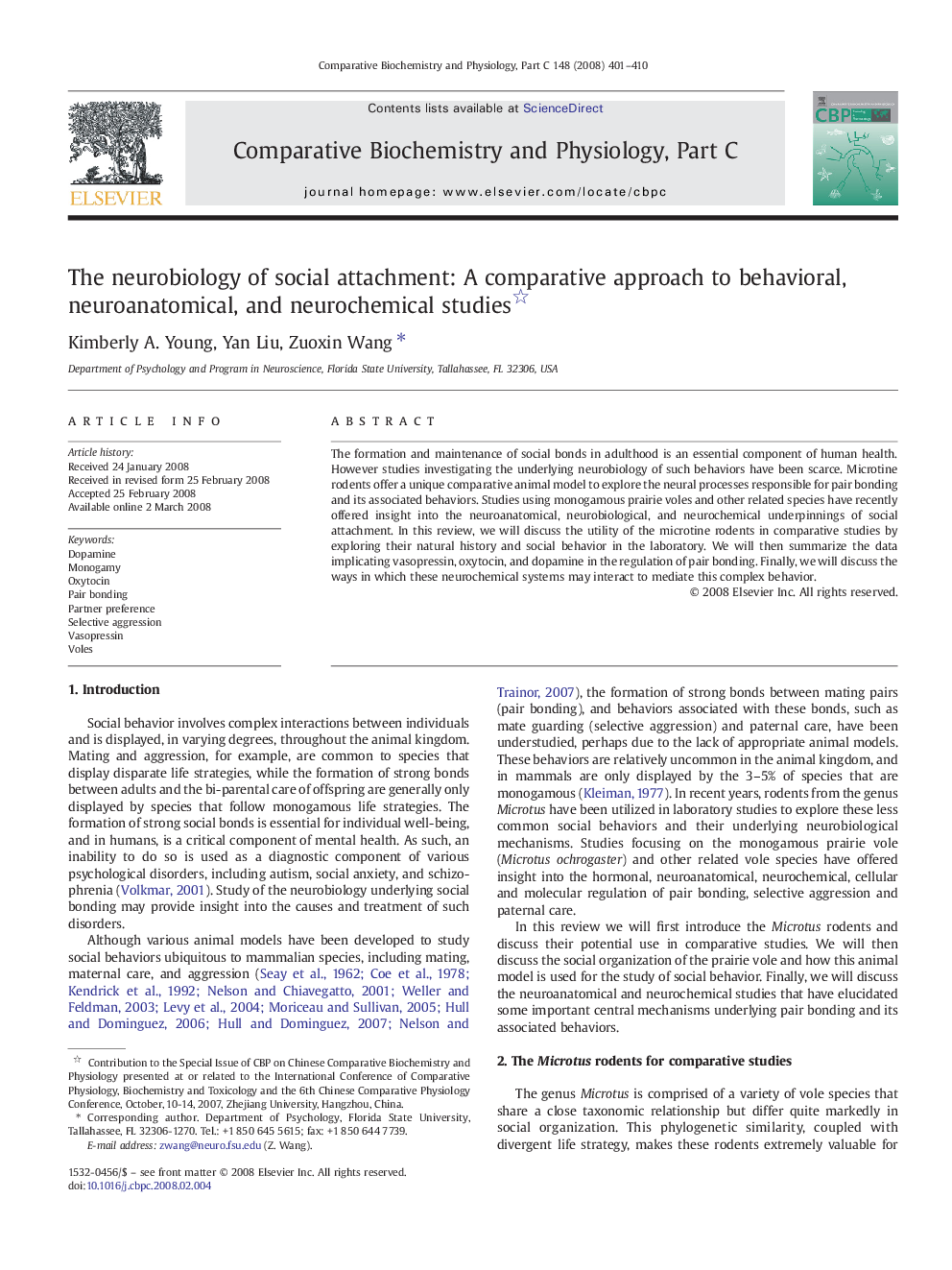| Article ID | Journal | Published Year | Pages | File Type |
|---|---|---|---|---|
| 1977748 | Comparative Biochemistry and Physiology Part C: Toxicology & Pharmacology | 2008 | 10 Pages |
The formation and maintenance of social bonds in adulthood is an essential component of human health. However studies investigating the underlying neurobiology of such behaviors have been scarce. Microtine rodents offer a unique comparative animal model to explore the neural processes responsible for pair bonding and its associated behaviors. Studies using monogamous prairie voles and other related species have recently offered insight into the neuroanatomical, neurobiological, and neurochemical underpinnings of social attachment. In this review, we will discuss the utility of the microtine rodents in comparative studies by exploring their natural history and social behavior in the laboratory. We will then summarize the data implicating vasopressin, oxytocin, and dopamine in the regulation of pair bonding. Finally, we will discuss the ways in which these neurochemical systems may interact to mediate this complex behavior.
